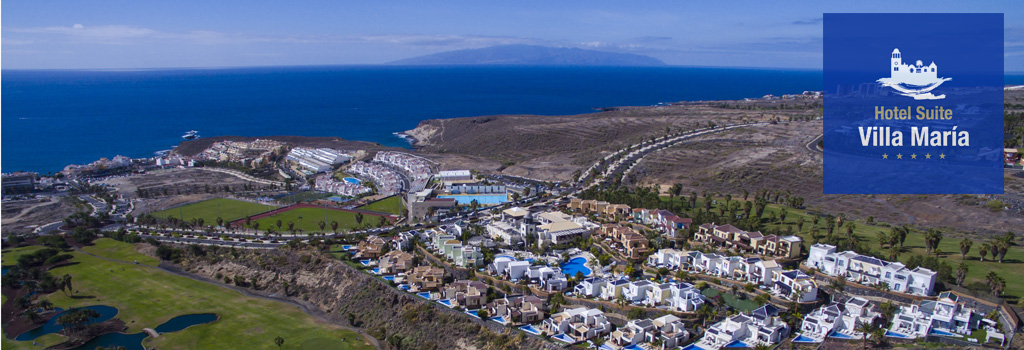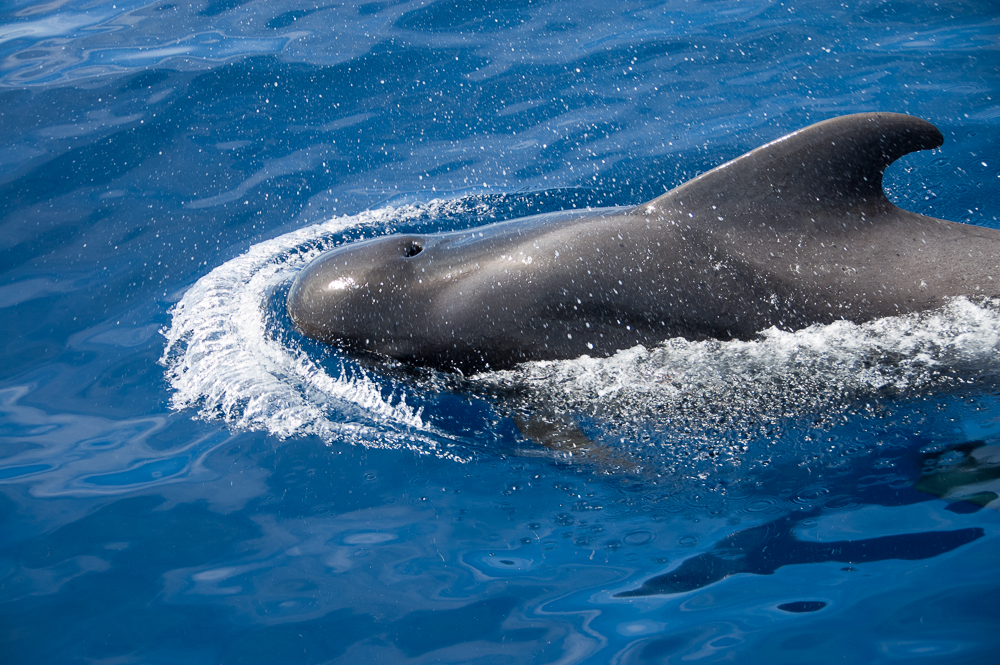About pilot whales and marine curiosities: Discover the Canarian sea fauna from Hotel Suite Villa María

The location of the Canary Islands in general and specifically Tenerife, especially the southwestern part of the island, due to its volcanic origin and the influence of the sea currents on this area of the world, make the waters around us a perfect garden for the proliferation of sea life and, more concretely, as beautiful and spectacular animals as cetaceans, in their many varieties.
Different types of dolphins and whales inhabit all year round he bays of the Canary Islands and especially the coast of Adeje and its surroundings, feeding on sea fauna that not only does the wonders of human palates in the traditional Canarian cuisine, but they are also to the liking of these beautiful animals, which allows as well residents as tourists to enjoy their sighting in open sea. Is this a privilege available to very few locations in the world and from Hotel Suite Villa Maria we encourage our guests to enjoy it with great pleasure, managing those who want booking of boat trips which allow them to enjoy the company of these magnificent marine mammals.
A good example of this was noted in the blog of the journalist and travels’ influencer, Pau García Solbes, who visited us a few months ago and did not hesitate to venture together with his wife and children into the beautiful waters of Costa Adeje to hunt for the perfect photos of these animals. Of course, they got them. In their case, as you can see in the images, they met a happy family of pilot whales, but do not let the name to confuse you: it is a type of dolphin, not of a whale.
no images were found
Sailing between tropical pilot whales through the see around Costa Adeje © Pau García Solbes - El Pachinko
What if we tell you a little more about this beautiful species today?
The tropical pilot whale or short-finned pilot whale (Globicephala macrorhynchus), together with the common pilot whale or long-finned (Globicephala melas), are the most important group of species in the Canary Islands, precisely because of our temperate climate. In fact, our Costa Adeje is one of the four fixed homes that have been discovered for these beautiful animals, being the Southwest of Tenerife the common residence of these species (Heimlich-Boran, 1993), together with Japan (Kasuya & Tai, 1993), California and Hawaii (Olson & Relly, 2002).

Tropical Pilot Whale - Globicephala_macrorhynchus © Wikipedia
The tropical pilot whale and the common one differ each other because of the form of their heads, rounded, small and with a peak-shaped mouth in the case of the common one and more bulky, robust and without peak in the case of the tropical one. Although the biggest difference between these two species is, as their nickname indicates, the length of their fins. While the common pilot whale’s fins are about a 16% of its total length, in the case of tropical ones this size is reduced to less than 15%.

Common Pilot Whale - Globicephala Melas © Wikipedia
There are also several curiosities that accompany these marine animals. Did you know that they become darker and darker as they grow older? While the younger ones have a brown or light gray color, over the years they can become practically black. However, they maintain a clear anchor spot in the lower part of their body which, for females, extends around the mammary crevices, which is believed to be useful to guide the pups during lactation time.
Another interesting curiosity is that, given the usual coexistence of both species in the bays of Tenerife, it has recently been discovered that miscegenation between them is possible, according to a genetic study from 2013 (Miralles et al.) that confirmed the existence of an adult individual, son of a tropical pilot whale father and a common mother.
You feel like seeing them in person right now, don’t you? From Hotel Suite Villa Maria we encourage you to do it in the open sea. From our Front Desk we will be happy to organize your trip so that you can enjoy one of the most unique and wonderful experiences that the Canary Islands offers.
And this does not end here! Soon we will tell you other curiosities about the impressive marine species living in the Canary Islands. Follow our blog and social networks to not missing it!
Categories: Descubre Tenerife

